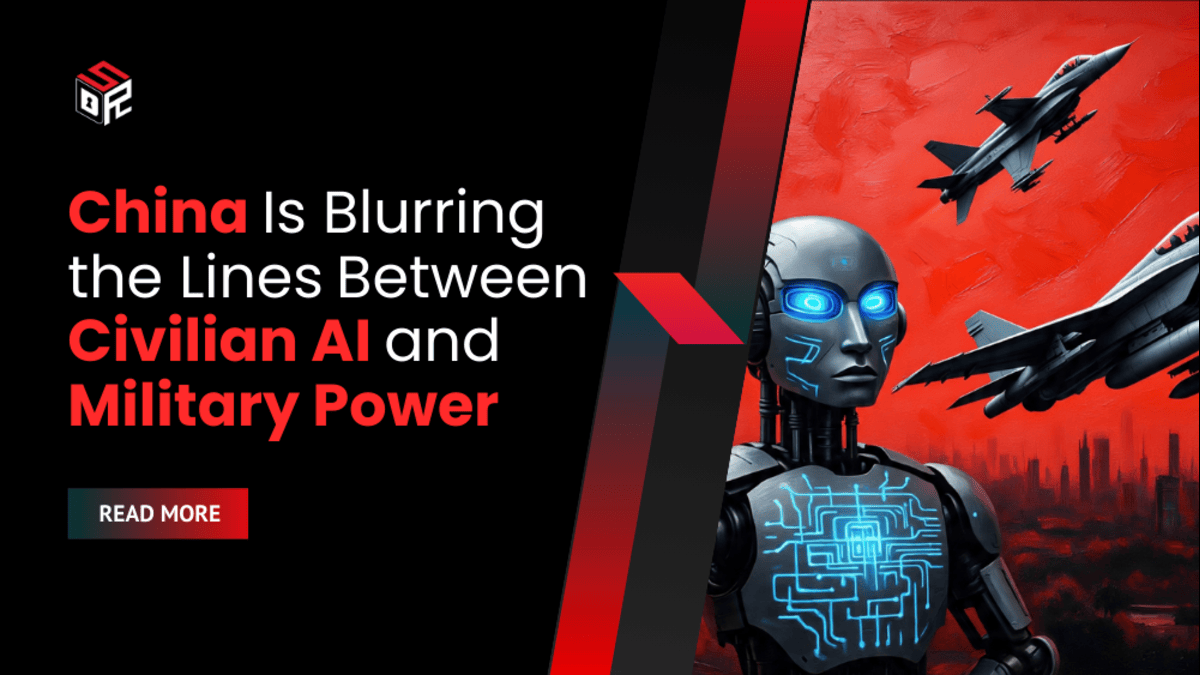China is increasingly fusing civilian artificial intelligence (AI) applications with military use cases, raising alarms over how everyday technologies like voice assistants, drones, and satellites are feeding into the capabilities of the People’s Liberation Army (PLA).
What begins as harmless consumer technology—such as software used for customer service or agricultural monitoring—is often redirected into the military’s arsenal for surveillance, targeting, and combat support.
Everyday AI Repurposed for Military Objectives
Consider how quickly AI designed for ordinary life can be redirected:
- A voice recognition app built for call centers is repurposed to intercept and process enemy radio communications.
- A commercial drone used for wedding photography is adapted for battlefield reconnaissance.
- A satellite imaging system developed for agriculture is transformed into a tool for missile targeting and strike precision.
This process of dual-use integration is not speculative. It is part of China’s deliberate strategy under its military-civil fusion to merge commercial AI innovation with national defense priorities.
Evidence From Defense Procurement Records
The Center for Security and Emerging Technology (CSET), a Washington-based think tank, published a detailed report in September 2025 that sheds light on this trend.
The report examined 2,857 AI-related defense contract award notices issued between January 2023 and December 2024—finding that 1,560 organizations, spanning state defense firms, startups, and universities, secured at least one PLA AI contract CSET.
The analysis highlights how nontraditional vendors, including newer AI startups, are playing a growing role alongside legacy defense players CSET+1.
Traditional Defense Giants Meet AI Startups
For decades, major state-owned defense companies like CETC, CASC, and NORINCO dominated procurement for radars, drones, and missile systems. Now, these traditional defense players are integrating advanced AI tools into weapons platforms.
Meanwhile, a wave of startups founded after 2010 are contributing to the military’s AI toolkit, including:
- iFlytek – recognized for voice recognition and translation AI, and awarded multiple AI-related PLA contracts The Epoch Times.
- PIESAT – provider of satellite imaging and mapping; its Hongtu-1 (PIESAT-1) satellite serves both civilian and reconnaissance roles Wikipedia.
- JOUAV – designs autonomous VTOL drones used in mapping, surveillance, and with known PLA applications JOUAVIntelligence Online.
In other cases, firms like Sichuan Tengden, founded by former defense engineers, have built military-grade drones from the outset—blurring the line even further between startup innovation and defense deployment.
Universities and Research Institutions as Gateways
Academic institutions also serve as potential conduits for AI technology transfer to the military. Many Chinese universities maintain global research partnerships, some even tied to PLA-linked entities.
The CSET report flags that because these institutions are not sanctioned, they continue to access advanced semiconductors, AI software, and international research collaborations, creating pathways for civilian research to flow toward military development CSET+1.
Strategic Risks of Blurred AI Boundaries
This integration creates several strategic challenges:
- Unclear Boundaries: It is increasingly difficult to identify which AI tools serve purely civilian purposes and which feed into PLA systems.
- Regulatory Dilemma: Tighter restrictions on research ties risk hindering innovation, while looser policies risk empowering China’s AI-enhanced military.
- Global Security Impact: Dual-use AI can transform warfare, enabling faster decision-making, precision targeting, and increased automation.
As the CSET researchers conclude, the challenge lies not just in tracking contract awards, but understanding how civilian innovation is fast becoming foundational to China’s growing military AI strategy.









